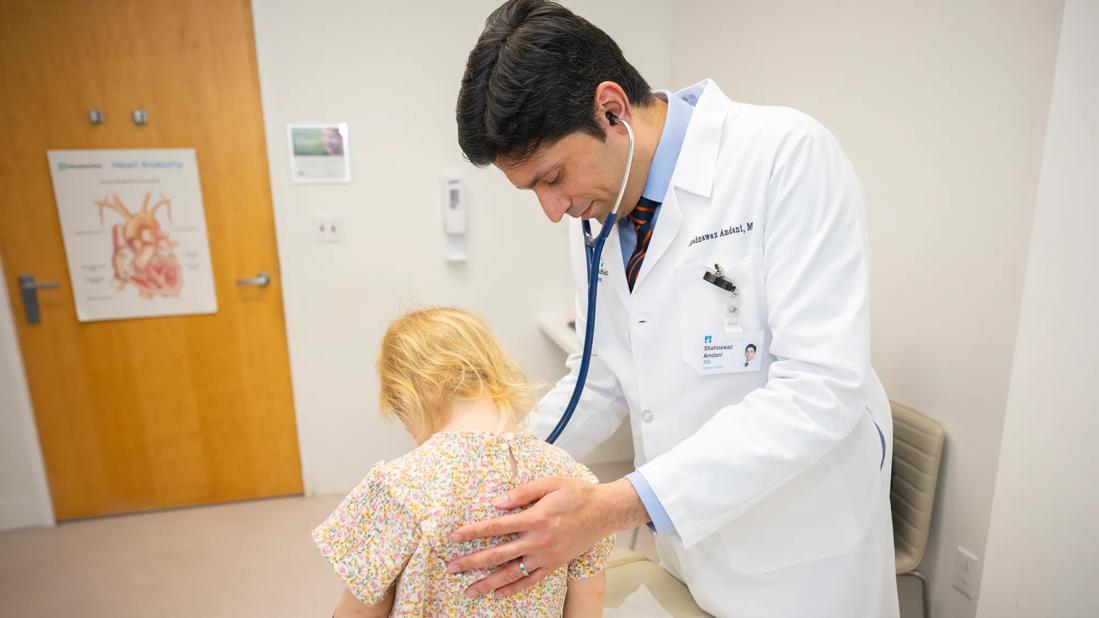Survival is improving, but the youngest patients still face disproportionate risk

The first comprehensive report from the Advanced Cardiac Therapies Improving Outcomes Network (ACTION) — a collaboration of nearly 60 pediatric cardiology centers across North America — offers new insights into the evolving landscape of pediatric ventricular assist device (VAD) therapy. Drawing from data on more than 1,200 children, this landmark publication in The Journal of Heart and Lung Transplantation highlights both significant progress and persistent challenges in the care of pediatric patients with advanced heart failure.
Advertisement
Cleveland Clinic is a non-profit academic medical center. Advertising on our site helps support our mission. We do not endorse non-Cleveland Clinic products or services. Policy
The results are compelling: nearly 90% of pediatric patients on VAD support experienced favorable outcomes at 180 days. Yet, the data also underscores a critical difference — younger children remain at higher risk for adverse events such as stroke. The authors call for earlier intervention, greater uniformity in care across institutions, and meaningful industry investment in home-based VAD technology.
“With the growing use of VADs in children, particularly those with congenital heart disease, it's crucial to understand patient profiles, device use, and outcomes in a contemporary cohort,” says Shahnawaz Amdani, MD, Section Head of Pediatric Heart Function and Transplant at Cleveland Clinic and coauthor of the study.
Since its inception in 2018, the ACTION registry has become one of the most robust data sources for pediatric heart failure, including VAD support. The latest report integrates over 1,400 VAD implants in patients aged 18 and under and is one of the most ambitious efforts to date aimed at standardizing and optimizing pediatric VAD care. Built into the registry is a quality improvement framework that fosters outcome transparency and cross-institutional collaboration.
Patient demographics and device use. “Roughly one-third of patients were under 1 year old at the time of device implantation,” notes Dr. Amdani. “This age group is especially vulnerable and requires nuanced, individualized care.”
VAD utilization has increased markedly: from 26% of registry patients receiving VADs in 2018 to 42% in 2023. This rise likely reflects both broader acceptance of VADs and the increasing prevalence of refractory heart failure in children with congenital heart disease.
Advertisement
Survival and adverse events. Survival after VAD implantation reached 79.2% at one year — an impressive figure given the severity of illness in this population. Moreover, the incidence of stroke — a major concern — declined from a peak of 16% in 2019 to just under 13% in 2023.
Yet challenges remain. “Infants still bear a disproportionate burden, with stroke rates approaching 21%, a stark contrast to older age groups,” says Dr. Amdani.
Quality improvement. The data affirm the impact of standardized anticoagulation and blood pressure management protocols in mitigating stroke risk. Still, Dr. Amdani stresses a major gap: the lack of FDA-approved devices that enable recovery at home for younger children. “No current device supports safe outpatient rehabilitation in this age group. This is a glaring therapeutic void.”
Dr. Amdani summarizes several key lessons from the ACTION registry:
Advertisement
Advertisement

Staged pivotal noninferiority study is comparing BrioVAD with HeartMate 3

Largest outcomes analysis in children with CHD undergoing VAD implantation

Study explores center volume and outcomes using the STS-Pedimacs database

Cleveland Clinic series supports its feasibility, especially with HeartMate 3

Using alternative modalities to help patients with post-surgical pain

Experts advise thorough assessment of right ventricle and reinforcement of tricuspid valve

Reproducible technique uses native recipient tissue, avoiding risks of complex baffles

HALT has unique clinical implications for adults with congenital heart disease